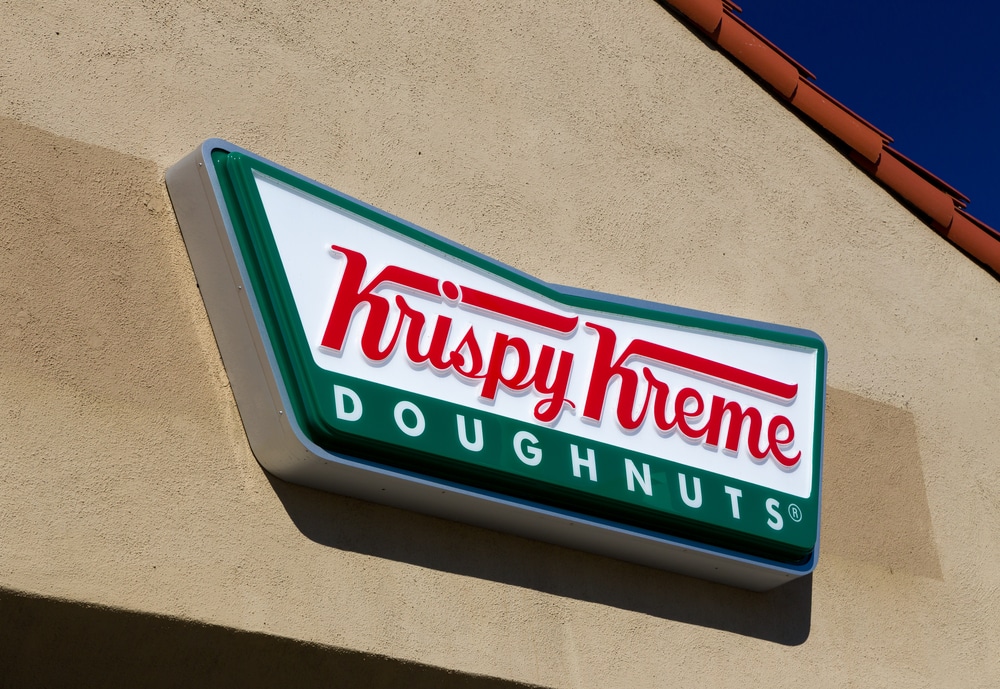The Factors Behind the Decline of Krispy Kreme (DNUT) Shares Today
The recent decline in Krispy Kreme (DNUT) shares has left investors and market watchers puzzled. Understanding the factors behind this significant drop requires a deep dive into the market dynamics, consumer behavior, and internal company challenges that may impact the stock’s performance. Let’s explore what led to this downturn.
Market Reactions and Economic Factors
One of the primary reasons for the decline in Krispy Kreme’s stock price may be linked to broader economic conditions. A downturn in consumer confidence often leads to decreased discretionary spending. As a bakery chain specializing in sweet treats, Krispy Kreme relies heavily on these spending habits. If customers feel financially squeezed, they may opt for less expensive snack alternatives, directly affecting the sales volume.
Revenue Forecast Concerns
Another critical aspect contributing to the drop in stock price is the company’s latest revenue forecast. Analysts and investors are always on the lookout for optimistic projections. If Krispy Kreme has adjusted its future earnings predictions downward, this could trigger immediate reactions in the stock market. Investors tend to sell shares when they sense profitability may decline, leading to a significant drop in stock value.
Competition in the Market
The fast-casual dining sector is incredibly competitive, with numerous brands vying for consumer attention. Krispy Kreme faces intense competition not only from other donut shops but also from coffee chains and fast-food restaurants that offer a variety of breakfast and snack items. This saturation in the market makes it challenging for Krispy Kreme to maintain its market share, further impacting its stock performance.
Supply Chain Issues
In recent months, many companies, including Krispy Kreme, have faced supply chain challenges that strain operations. Key ingredients might experience shortages, leading to increased costs. Rising prices can erode profit margins, creating concerns among investors about the company’s financial health. If Krispy Kreme struggles to secure essential ingredients at stable prices, it could lead to a chain reaction affecting everything from production to pricing strategies.
Key Challenges in the Supply Chain:
- Increased cost of raw materials
- Delayed shipments and logistics issues
- Labor shortages impacting production capabilities
Changing Consumer Preferences
The fluctuating tastes and preferences of consumers also play a pivotal role. In recent years, there has been a significant shift towards healthier eating. More people are seeking alternatives to sugary snacks, which directly impacts Krispy Kreme, a brand synonymous with indulgent treats. If the company does not adapt to these changing preferences, it risks losing market relevance.
Investor Sentiment and Market Speculation
Investor sentiment can significantly affect stock prices. Negative sentiment regarding Krispy Kreme’s growth prospects may lead to a snowball effect, where investors sell off shares en masse. This can create waves of panic, further driving down the stock price. Market speculation, often driven by social media and news coverage, can amplify these effects, leading to a volatile stock performance.
Potential Strategic Missteps
If Krispy Kreme’s management has made decisions that are perceived as erratic or counterproductive, this can also lead to declines in stock price. Examples could include failed marketing campaigns or poorly received product launches. Investors typically react negatively to companies that seem out of touch with their customer base or market trends. Additionally, if there’s a lack of transparency about the company’s strategic direction, it can create uncertainty among investors.
Lessons for Investors
For those who hold Krispy Kreme shares or are considering investing, it’s essential to stay informed. Monitoring economic trends, consumer behavior, and company announcements can provide crucial insights. Understanding the implications of competition and awareness of changing market conditions can also help in making educated decisions regarding stock investments.
While the decline of Krispy Kreme shares is a concern, it serves as a reminder of the volatile nature of the stock market. Keeping a close eye on the factors affecting the company’s performance can help you navigate your investment choices more effectively.
Strategies for Investors: Navigating Market Fluctuations and Stock Recovery
Investing in the stock market can feel like riding a roller coaster, especially during times of market fluctuations. Understanding strategies to navigate this unpredictable landscape is key for investors looking to safeguard their investments and seize opportunities for growth. Below are some strategies that can help you not only survive market downturns but also recover swiftly.
Embrace a Long-Term Perspective
One of the most vital strategies is adopting a long-term perspective. Stock prices can be highly volatile in the short term but hold steady growth potential over time. Instead of panicking during market dips, focus on your long-term investment goals. This approach helps you weather storms and minimizes the temptation to make impulsive decisions.
Diversify Your Portfolio
Diversification is a powerful tool in an investor’s toolkit. By spreading your investments across different sectors and asset classes, you can reduce risk. Here’s how you can diversify effectively:
- Invest across different sectors: Don’t put all your money into technology stocks. Consider healthcare, utilities, and consumer goods.
- Incorporate various asset classes: Mix stocks with bonds, real estate, or even commodities to create a balanced portfolio.
- Geographical diversity: Investing internationally can provide a cushion during downturns in your local market.
Regularly Reassess Your Investments
Market conditions are ever-changing, and so should your investment strategy. Regularly reassessing your portfolio allows you to adjust your holdings based on performance, market trends, and economic indicators. Set aside time quarterly or at least bi-annually to review your investments and make necessary adjustments.
Build an Emergency Fund
Having an emergency fund is crucial for any investor. This fund acts as a safety net, allowing you to avoid selling investments at a loss during downturns. Ideally, this fund should cover three to six months of living expenses. When the market dips, you can rely on your emergency fund for necessary expenses without the pressure of liquidating assets.
Stay Educated
Knowledge is power when it comes to investing. Stay informed about market trends, company performances, and economic news. Regularly consuming financial news helps you make educated decisions. You can do this by:
- Reading investment books and blogs
- Listening to finance podcasts
- Attending investment webinars and seminars
Utilize Dollar-Cost Averaging
Dollar-cost averaging involves investing a fixed amount of money at regular intervals, regardless of stock prices. This method helps you avoid the pitfalls of trying to time the market. By consistently investing, you can purchase more shares when prices are low and fewer when prices are high, which can lower your overall cost per share over time.
Limit Emotional Decision-Making
One of the biggest challenges for investors is managing emotions. It’s easy to get swayed by fear when stocks plummet or excitement when they surge. Stick to your investment plan and avoid knee-jerk reactions to market changes. Mindfulness techniques and setting clear investment guidelines can help you make rational decisions.
Consult with Financial Advisors
Sometimes, getting professional help can be beneficial. Financial advisors can provide tailored strategies based on your financial situation and goals. They can help you create a plan designed to withstand market fluctuations and offer insights you might not have considered. Always research and choose an advisor who understands your investment philosophy.
Stay Committed to Your Strategy
Staying committed to your investment strategy is essential. The market will have its ups and downs, but if you have a well-thought-out plan, it’s crucial to stick with it. Frequent changes based on short-term market movements can lead to losses, so maintain discipline and trust your investment strategy.
Conclusion
Understanding why Krispy Kreme (DNUT) shares are facing significant decline today requires a careful analysis of both external market factors and internal company developments. Various elements, such as consumer demand shifts, market trends, and operational challenges, have significantly impacted investor confidence. As the market fluctuates, remaining informed about these dynamics can help investors make wise decisions.
For those invested in Krispy Kreme or considering buying shares, now is the time to implement strategic measures. Researching market trends and company performance is crucial. Stay updated on news, quarterly earnings reports, and consumer preferences to grasp potential recovery points. Diversifying your portfolio can also safeguard against downturns—investing in unrelated sectors may provide stability.
Additionally, consider taking a long-term perspective. Market volatility can be daunting, but historically, companies like Krispy Kreme have rebounded from challenges over time. By maintaining faith in the brand’s potential and the team’s innovations, you can enhance your investment strategy.
In essence, the current situation with Krispy Kreme shares signals a pivotal moment for investors. With appropriate strategies and an informed perspective, there’s an opportunity to navigate these dips successfully. Seasoned investors know that patience and careful analysis often yield favorable returns, so don’t lose sight of the long game. Whether you choose to hold, sell, or buy more shares, a thorough understanding of the market shifts is your best asset during turbulent times.
Comparison, examination, and analysis between investment houses
Leave your details, and an expert from our team will get back to you as soon as possible
* This article, in whole or in part, does not contain any promise of investment returns, nor does it constitute professional advice to make investments in any particular field.
To read more about the full disclaimer, click here- sagi habasov
- •
- 16 Min Read
- •
- ago 8 minutes
 Montrose (NYSE: MEG) Surprises with Strong Q2, Stock Jumps 24.7%
Montrose (NYSE: MEG) Surprises with Strong Q2, Stock Jumps 24.7%
Analysis of Montrose (NYSE: MEG) Q2 Financial Performance and Market Impact Montrose Environmental Group, Inc. (NYSE: MEG) reported an impressive
- ago 8 minutes
- •
- 16 Min Read
Analysis of Montrose (NYSE: MEG) Q2 Financial Performance and Market Impact Montrose Environmental Group, Inc. (NYSE: MEG) reported an impressive
- Lior mor
- •
- 16 Min Read
- •
- ago 55 minutes
 Carriage Services (NYSE:CSV) Posts Better-Than-Expected Sales in Q2, Full-Year Sales Guidance Is Optimistic
Carriage Services (NYSE:CSV) Posts Better-Than-Expected Sales in Q2, Full-Year Sales Guidance Is Optimistic
Analyzing Carriage Services (NYSE:CSV) Q2 sales performance and market reactions Carriage Services, a notable name in the funeral services sector,
- ago 55 minutes
- •
- 16 Min Read
Analyzing Carriage Services (NYSE:CSV) Q2 sales performance and market reactions Carriage Services, a notable name in the funeral services sector,
- orshu
- •
- 16 Min Read
- •
- ago 2 hours
 South Korea Trade Envoy Says Samsung, SK Hynix Will Not Be Subject to 100% US Tariffs on Chips
South Korea Trade Envoy Says Samsung, SK Hynix Will Not Be Subject to 100% US Tariffs on Chips
Impact of U.S. Tariffs on South Korean Semiconductor Giants: Samsung and SK Hynix The recent stance of the trade envoy
- ago 2 hours
- •
- 16 Min Read
Impact of U.S. Tariffs on South Korean Semiconductor Giants: Samsung and SK Hynix The recent stance of the trade envoy
- sagi habasov
- •
- 17 Min Read
- •
- ago 2 hours
 Dollar Holds Losses on US Economy Concerns, Fed Appointments
Dollar Holds Losses on US Economy Concerns, Fed Appointments
The Impact of US Economic Concerns on Dollar Stability Recent trends in the global economy show that the dollar is
- ago 2 hours
- •
- 17 Min Read
The Impact of US Economic Concerns on Dollar Stability Recent trends in the global economy show that the dollar is












